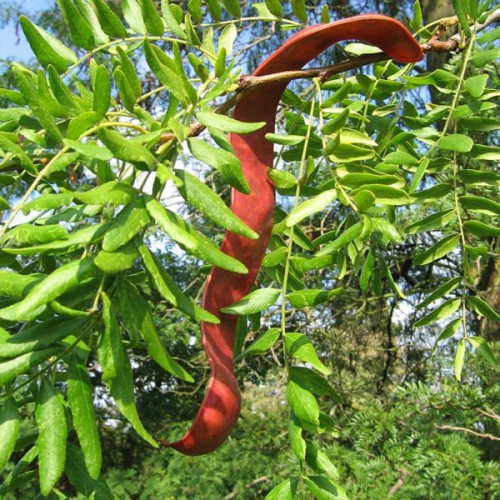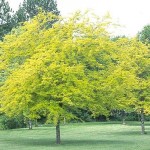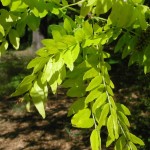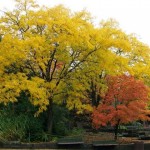Thornless Honeylocust (Gleditsia Triacanthos Inermis) 5 seeds
Availability: In Stock
Distinguished by its fine-textured summer leaves and its informal spreading habit, honeylocust is a ubiquitous medium to large deciduous tree native to the central and eastern United States and extreme southern Ontario. Most garden honeylocusts are sterile, non-fruiting selections of the thornless variety Gleditisia triacanthos f. inemris.
The bright green, pinnately compound leaves of this cold-hardy tree cast filtered shade. They flush relatively late in spring and turn dull yellow in autumn. Fallen leaves create relatively little mess. The trunk has gray-brown, shallowly fissured bark, and lacks the formidable spines typical of most honeylocusts. Inconspicuous greenish spring flowers appear in clusters in spring. Fertile forms of this tree bear large flat red-brown seedpods which litter the ground when shed in autumn and winter.
Honeylocust likes sun and is adapted to a wide variety of soil types. Thornless selections make good shade trees, although overuse of this tree has led to increasing insect and disease problems. This tree can self-sow, invasively in areas such as eastern Australia. (info source: Learn2Grow.com)
Genus - Gleditsia
Species - Triacanthos
Common name - Thornless Honeylocust
Pre-Treatment - Not-required
Hardiness zones - 4 - 9
Height - 50'-80' / 15.2m - 24.4m
Spread - 12"-18" / 30.5cm - 45.7cm
Plant type - Tree
Vegetation type - Deciduous
Exposure - Full sun
Growth rate - Fast
Soil PH - Acidic, Neutral, Alkaline
Soil type - Loam, well drained
Water requirements - Average
Landscape uses - Feature Plant, Shade Trees, Street Trees
Germination rate - 90%
Bloom season - Late Spring
Leaf / Flower color - Light Green / Yellow Green



